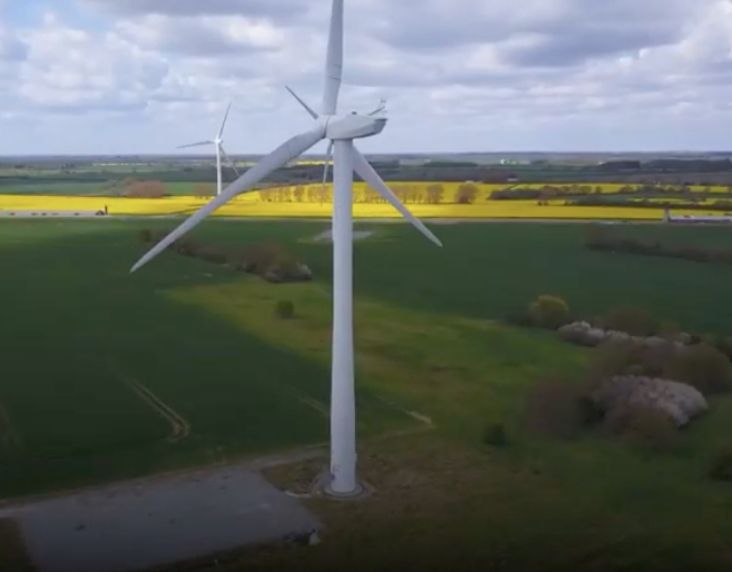July 2023 has been the warmest month on record. The warmer temperatures lead to warmer oceans which in turn lead to stronger storms, as well as rising sea levels.
The green transition to a low carbon economy has become increasingly evident as the world grapples with the urgent need to mitigate climate change.
The entire economy is moving towards net zero. The enterprises must consider carbon emissions in every decision-making, identify opportunities for decarbonization, and differentiate their business to achieve faster net zero goals.
What Carbon Accounting and Green Ledger Mean Today
SAP has announced a sustainability green ledger in Sapphire 2023. With the green ledger-based transaction accounting for carbon, companies can manage the carbon flows like cash flows and balance their double entry carbon books, the same way to balance financial books for accurate emissions calculations.
We need to treat emissions like transactions entering and leaving the systems so that the emissions can lead to journal entries, so-called green ledger entries. Carbon accounting, like financial accounting, will provide business critical input such as operating expenses vs. GHG emission and impact on the operating margin with increased production of low emission or new green products.
The companies can analyse carbon emission hotspots to make improvements, such as redesigning products and processes through financial costs and revenue across cost /profit Centers and market segments.
The green ledger combines financial and environmental data on your profit and loss statements for better decision-making and insights into core business processes through ERP. The solution will enable companies to set accurate net-zero targets and maximize decarbonization impact to continuously identify new opportunities for greenhouse gas reduction.
The SAP offering will be embedded in RISE and GROW with SAP for SAP S/4HANA Cloud.
Green Ledger Enables a New Set of Sustainability KPIs
Accurate carbon accounting is vital in addressing climate change with data at detailed operational specificity along each value chain.
The green ledger will enable the new set of intensity targets from carbon accounting transparency in terms of physical output – e.g., measuring a steelmaker's carbon emissions per ton of steel from different steel grades, including usages of more recycled and scrap steel in the production process.
The businesses will work with cross sectors and engage new ecosystem partners to co-create sustainability solutions to discover and solve problems by exchanging capabilities and sharing carbon emission data across alliances of competitive advantage.
The new set of sustainability could be to measure and track not just the emissions from making the steel and usages of recycled steel but extending to work with mining companies by steelmakers and car manufacturers to reduce the scope 3 emissions coming out from mining the iron ore.
For example, steelmakers companies are competing to make 'green/low carbon steel' to meet demand from the vehicle and other industries. The vehicle manufacturers will use green steel of their low carbon vehicles, but it depends on consumers' willingness to pay more. The vehicle manufacturers cannot afford to take on the cost of building low carbon cars if consumers do not pay or do not get green tax incentives and rebates from government policies.
The Role of Finance in Achieving Net Zero
The decarbonization efforts and the cost behind climate change will require cash flow management, mitigate climate risks, and reduce spending on carbon tax and credits to achieve net zero goals. Support from both the CFO and finance function is needed to work across many initiatives to efficiently run new sustainable business models, ESG, and circular economy principles.
Here are some of the sustainability initiatives, which would require business, financial planning, and budgeting to track and achieve over a period in a phased manner:
- Build and manage the supply chain of new business models, for example, auto, the utility industry looking to manage the entire supply chain entirely in a new way.
- Innovate and deliver sustainable products and services through embedding eco-design.
- New revenue stream opportunity through higher margins from new sustainable products as a competitive advantage
- Manage future carbon pricing and carbon tax liability.
- Carbon border tax on GHG emissions embedded in imported products.
- Need to re-look at the redistribution of suppliers (increased spending from green suppliers), logistic routes, and energy-efficient sites by applying environment, social, and governance (ESG) principles.
Leading Role of Financial Institutions on Financed Emissions
The concept of "financed emissions" has gained worldwide attention in combating climate change. The financed emissions refer to the emissions from investments and financial activities, including loans and investment for sustainable project portfolios.
There is an enormous opportunity to mitigate financed emissions and reshape our financial systems to drive the transition toward a low-carbon economy.
The greenhouse gas emissions can be attributed to the economic activity - production and consumption of goods and services financed by institutions. The financial institutions are uniquely positioned to influence through their investment and lending activities to lead in supporting net zero goals of countries and industries.
For example, the bank can set a target to reduce oil and gas sector financed emissions in terms of 'revenue-based carbon intensity,' measured by how many kilograms of carbon dioxide its oil and gas clients emit per dollar of their revenue.
By integrating ESG factors in decision-making, incorporating carbon pricing mechanisms, the financial sector can address financed emissions and manage the impact on future cash flows and associated physical and transition risks at sustainable project portfolio level.
The Next Steps:- Simplify the Journey to a Sustainable Future
The climate crisis may become a financial crisis. Climate and extreme weather-related events have affected the cash flows management of insurers, travel, and tourism companies.
Businesses will collaborate to find a better way to address common industry problems. Cooperation around new products and services will be the inevitable next step in the growth of collaboration evolution.
The green ledger-based carbon accounting will open a new set of cross-sector sustainability initiatives to jointly achieve enterprise-wide net zero goals.
At Tech Mahindra, we have simplified and sharpened our commitments toward sustainable digital transformation in the new world order through collaborating solutions and ecosystem partnerships to drive the adoption of innovative technology. We Rise for a more equal world, to be future-ready, and to create value.
Tech Mahindra's Sustainability Framework and our solutions have been built on the four key pillars to enable sustainability-driven business models and embed them into enterprise business strategy and operations.
About the Author
Avanish Kumar
SAP Practice Head, Tech Mahindra
Avanish has over 28 years of experience in the Industry and SAP domain. Avanish is passionate about working in sustainability to enable business value-driven S/4HANA sustainable transformation for clients. He has extensive experience developing sustainability solutions for different industries using SAP technologies and digital platforms.
He is a certified sustainable supply chain professional and a regular blogger on sustainability, supply chain, and SAP. Avanish has a bachelor’s in engineering from IIT, Roorkee, and a diploma in sustainable business strategy from Harvard Business School.





